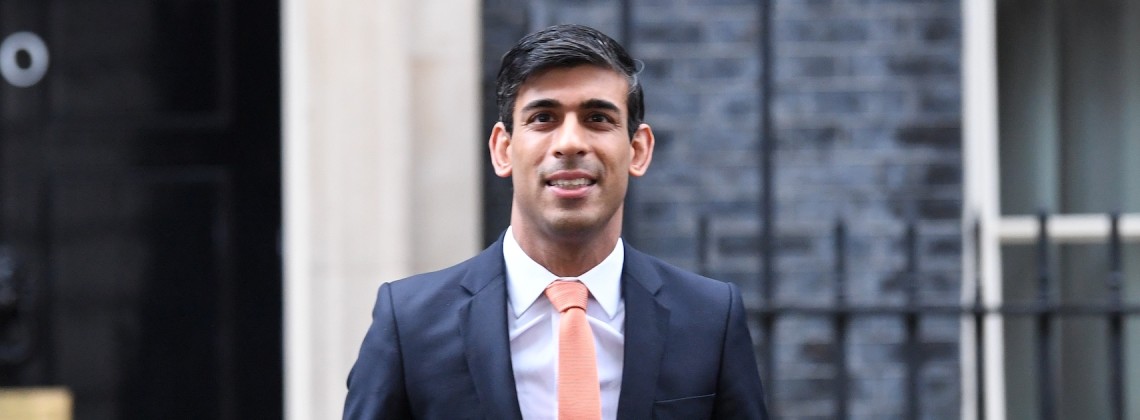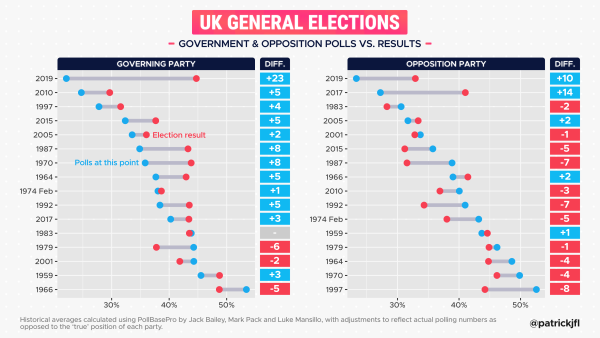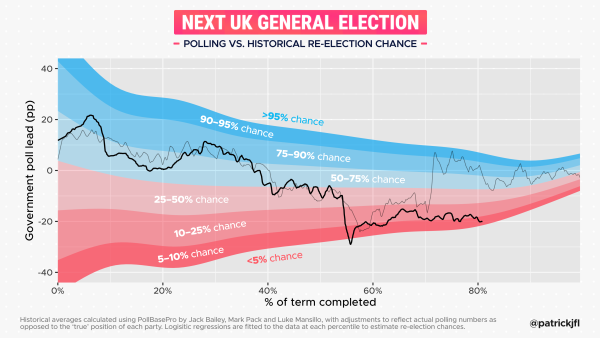
UK Election: Can the Conservatives still win re-election? What history tells us…
Patrick Flynn
8 February 2024
Labour’s lead in the polls currently stands at around 20 points. Since 1960, only once has an opposition party held a larger lead at this stage of the parliament — in 1996, before Labour went on to win a landslide 179-seat majority less than a year later.
With the general election now certain to take place within the next 12 months, I thought we could look at the historical record and pull out some statistics to see the challenge faced by the Conservatives (and whether it’s already game over for Rishi Sunak).
The government’s vote share currently ranks a dismal 15th out of 17 election cycles since 1959 (excluding February to October 1974), between Labour in the runup to 2010 and the Conservatives pre-1997.
To merely tie with Labour in the popular vote, the government would need a 10-point swing between now and the general election, but such a swing would be one of historical proportions. A double-figure gain for the governing party has only happened once, during the frantic 2019 era when the Brexit Party and Liberal Democrats were both hitting 20% in the polls. Furthermore, a double-figure loss for the opposition party between this point and the general election has not happened for at least 65 years (the polling data does not go back any further).

If we look at whether the governing party went on to be re-elected, the opposition’s polling position looks particularly predictive. On all eight occasions in which the opposition was under 40% at this point — even in cases where the opposition led — the government ended up being re-elected. This speaks to the idea that while a government may be suffering in the opinion polls, if there is no real enthusiasm for the opposition, the governing party has more capacity to mount a comeback.
However, if the opposition is already sweeping up anti-government votes, there is little room for recovery. On the four occasions in which the opposition was polling above 45% at this stage (1964, 1970, 1979 and 1997), the government was kicked out of office at the subsequent election. For context, Labour’s polling average is currently 45%.
To put some more concrete numbers on the government’s re-election chance, I’ve created a model which charts the likelihood of the governing party being reelected based on the polls at any point in time.

The model estimates that, based on historical polling, the Conservatives have somewhere between a 5% and 10% chance of winning re-election.
At this point, governments are supposed to be over their nadir and on their way to some sort of recovery, but there is no sign of the Tory vote share moving. If the polls continue to show a 20-point Labour lead in the coming months, Sunak’s chance of forming the next government will fall below the 5% mark.
The Conservatives had hoped to replicate 1992, when the government mounted a significant comeback and went on to be re-elected. Until about six months ago, the polling in the 1992 election cycle actually looked remarkably similar to the current one, but it has since diverged significantly. By now, John Major’s party had already reduced Labour’s lead to the low single figures.
Let’s look again at the chart with 1992 included as a benchmark.

We can clearly see that at this point in the election cycle, despite being behind in the polls, Major’s government would have been narrowly favoured to win re-election. The Conservatives in 2024 do not have that luxury and — if history is anything to go by — are on course for a clear defeat.
Patrick Flynn
8 February 2024


